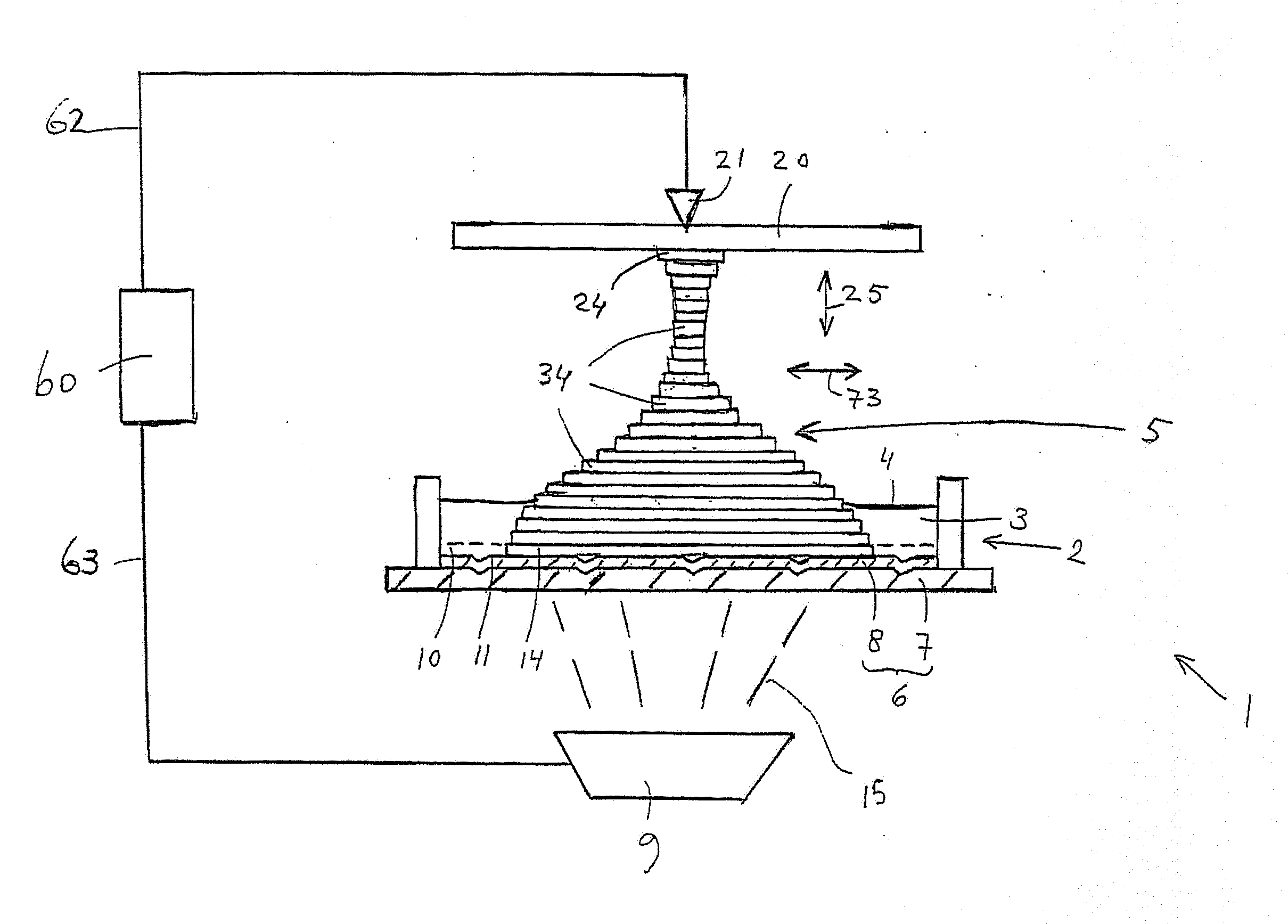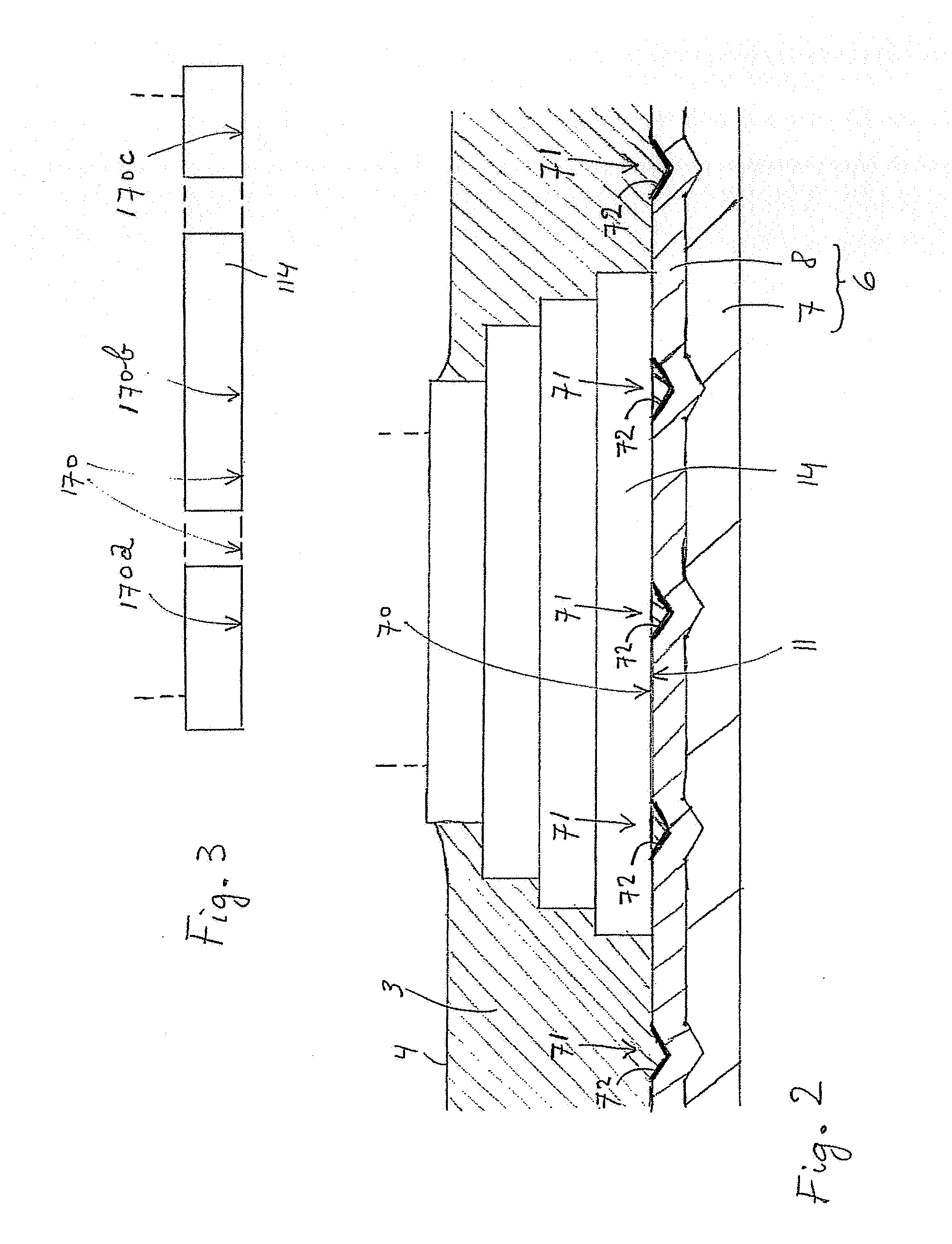Method and system for layerwise production of a tangible object
a tangible object and production method technology, applied in the direction of turning apparatuses, molds, food shaping, etc., can solve the problems of limited kinds of objects that can be rapidly formed, deformation, deterioration or breakage of objects, and increase of internal stresses in the production of tangible objects. , to achieve the effect of fast production of tangible objects
- Summary
- Abstract
- Description
- Claims
- Application Information
AI Technical Summary
Benefits of technology
Problems solved by technology
Method used
Image
Examples
Embodiment Construction
[0023]Reference is first made to FIGS. 1 and 2 which show an example of a system 1 for layerwise production of a tangible object 5. The system 1 can perform an example of a method for layerwise production of a tangible object. The tangible object 5 is shown while being produced. It may for example be a prototype or model of an article of manufacture or other suitable type of object.
[0024]The system 1 comprises a liquid reservoir 2 which, in the shown example, is filled with a liquid 3 up to a liquid level 4. The system 1 further comprises a construction shape 6 which is positioned below the liquid level 4 in the liquid reservoir 2. In the shown example the construction shape 6 comprises a bottom platform 7 of the reservoir 2, as well as, on top of the platform 7, an anti-stick coating 8. The construction shape 6 has a liquid contacting side 11 that is in contact with the liquid 3 in the liquid reservoir. Many other types and shapes of construction shapes can be applied instead.
[0025...
PUM
| Property | Measurement | Unit |
|---|---|---|
| shape | aaaaa | aaaaa |
| area | aaaaa | aaaaa |
| transparent | aaaaa | aaaaa |
Abstract
Description
Claims
Application Information
 Login to View More
Login to View More - R&D
- Intellectual Property
- Life Sciences
- Materials
- Tech Scout
- Unparalleled Data Quality
- Higher Quality Content
- 60% Fewer Hallucinations
Browse by: Latest US Patents, China's latest patents, Technical Efficacy Thesaurus, Application Domain, Technology Topic, Popular Technical Reports.
© 2025 PatSnap. All rights reserved.Legal|Privacy policy|Modern Slavery Act Transparency Statement|Sitemap|About US| Contact US: help@patsnap.com



